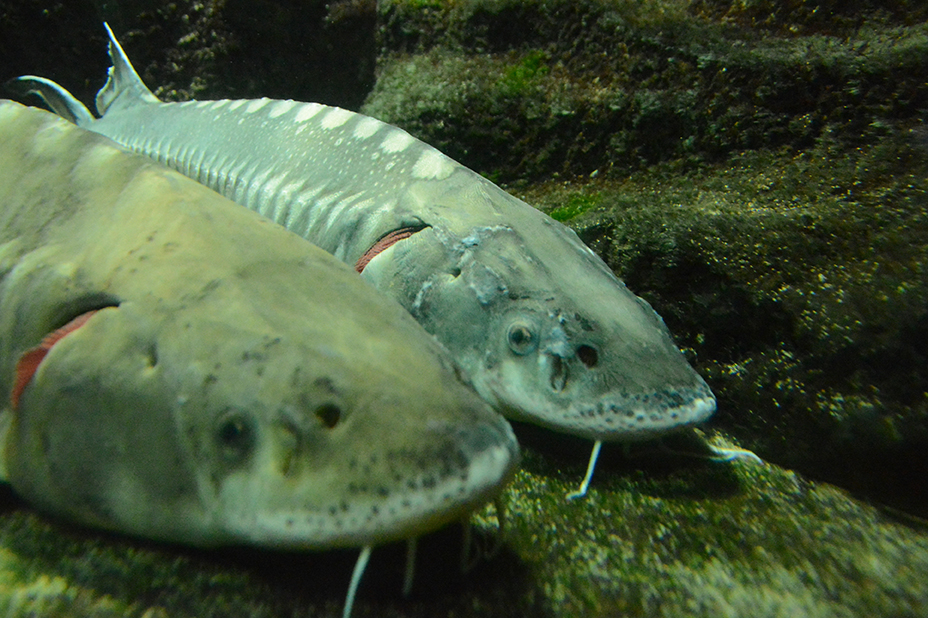Ecofish is excited to share a new publication titled Recovery Potential Assessment for White Sturgeon (Acipenser transmontanus) Upper Fraser Designatable Unit. According to the Ministry of Environment, the white sturgeon is the largest freshwater fish species in North America! Sadly, it is currently on BC’s red list ranked under the province’s second highest ‘at-risk’ rating.
This research document was published by the Canadian Science Advisory Secretariat (CSAS) and co-authored by Ecofish scientists Eric Smyth, Todd Hatfield, and Jonathan Abell alongside Brian Toth, fisheries biologist with the Carrier Sekani Tribal Council. Click here for the full publication and to learn more about threats affecting the population recovery of this incredible species.

White Sturgeon
Abstract
We assessed the recovery potential for the Upper Fraser White Sturgeon DU by examining the current population status, potential threats, and possible results of management strategies. Within the Upper Fraser DU, there are three distinct groups (or sub-DUs): the Mid-Fraser group, the Upper Fraser group, and the Nechako River group.
Prior to 1995, information about the abundance of White Sturgeon in the Upper Fraser DU was limited. Recent abundance estimates of mature (>160 cm) White Sturgeon in the Upper Fraser DU range from 1,177 to 1,564 fish. These estimates are based on the sum of the mature White Sturgeon abundances from the three groups. The most recent estimate of mature White Sturgeon in the Mid-Fraser group was 749 fish and the abundance was believed to be within the historic range, suggesting that the population is currently at equilibrium. The best estimate for mature White Sturgeon in the Upper Fraser group was 185 fish, which is also thought to be within the historic range. For the Nechako River group, the best estimate of adult population size was 630 fish; however, a declining trend in abundance for the Nechako River group reflects ongoing recruitment failure.
Twelve threats to White Sturgeon in the Fraser River are discussed. Abiotic threats include loss of habitat, habitat fragmentation, altered hydrograph, pollution, reduced turbidity, fishing effects, and altered thermal regime. Biotic threats include small population size effects, hatchery and aquaculture, reduced or altered food supply, change in ecological community, and disease.
Metapopulation models were designed to evaluate the effect of changes to mortality or habitat productivity on the abundance of the three groups. The models also consider uncertainty in life history parameters and exchange among groups. Relatively small changes to human-induced mortality or habitat productivity had substantial effects on the abundance of sturgeon in the Mid-Fraser and Upper Fraser, given the parameter and modeling assumptions. Losses here were mitigated by the introduction of individuals from the Nechako group, given the model structure and exchange rate assumptions. Changes to human-induced mortality or habitat productivity had little effect on the Nechako group meeting its abundance target; however, this was dependent on a large number of fish annually stocked and a high survival rate of stocked fish.
